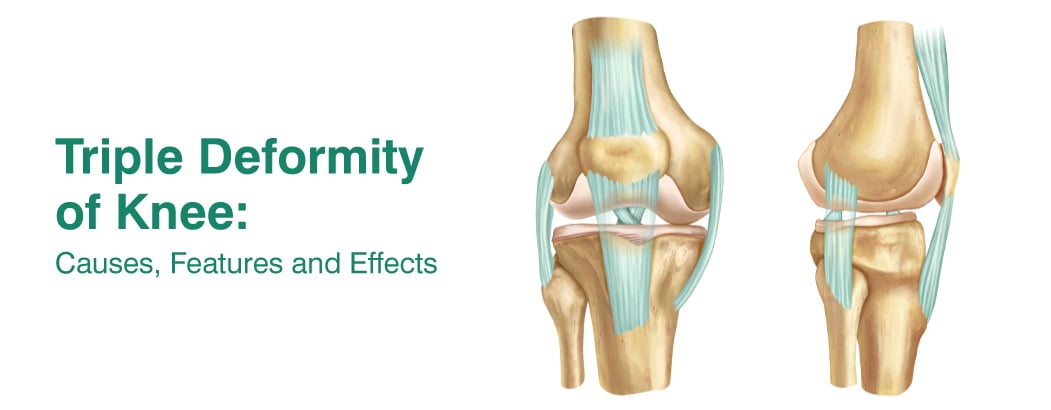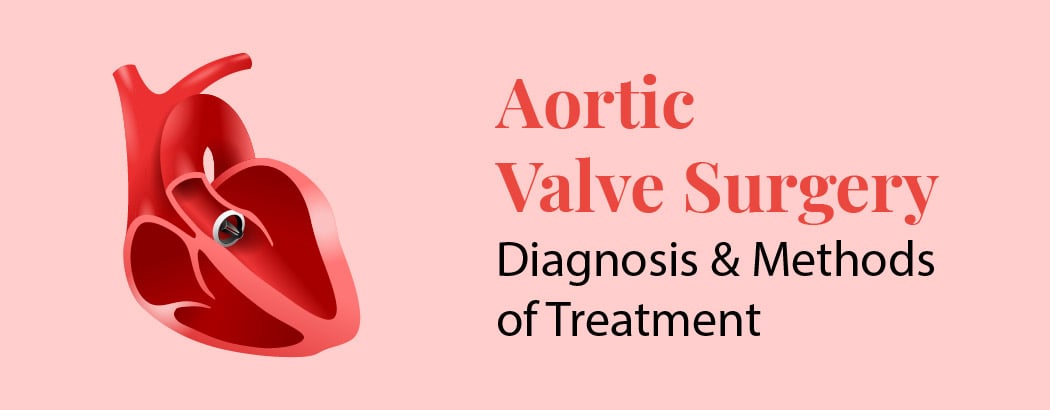Triple Deformity of Knee: Causes, Features and Effects
March 6, 2025

Combining flexion, external rotation, and valgus abnormalities at the knee, the triple deformity of knee is a syndrome that is frequently accompanied by posterior tibial subluxation. The characteristics of triple deformity of the knee are flexion deformity, valgus deformity, external rotation deformity, and posterior subluxation of the knee joint. This disorder may result in chronic impairment, prolonged rehabilitation, spinal imbalance, and strain on the popliteal fossa.
To prevent additional consequences, early diagnosis and treatment are crucial. The causes, characteristics, and consequences of triple knee deformity, as well as its diagnosis, management, and prevention, will all be covered in this overview.
Causes of Triple Deformity of Knee
A triple deformed knee is one in which the knee joint is flexed, externally rotated, and valgus deformed. A number of circumstances can bring on the disorder and it is frequently linked to posterior tibial subluxation.
The following are a few of the frequent reasons for triple deformity of the knee:
- Tuberculosis of the knee joint
- Rheumatoid Arthritis of the knee joint
- Iliotibial band contracture
- Polio
- Low clotting capacity
- Excessive bleeding
- Melon seed bodies
- Triple dislocation
A mix of these causes may occasionally bring on the disorder. If the triple deformity of the knee is severe, a total knee replacement may be required.
Features of Triple Deformity of Knee
Flexion, external rotation, and valgus deformity of the knee joint are symptoms of triple deformity of the knee. A number of different circumstances can bring on the disorder and it is frequently linked to posterior tibial subluxation. The following are some characteristics of triple knee deformities:
- Valgus deformity of the knee joint
- External rotation deformity of the tibia over the femoral condyle
- Flexion deformity of the knee joint with posterior subluxation of the tibia due to gravity-assisted contracture of the iliotibial band
Plain radiographs of the knee, including anterior-posterior and lateral views, and computed tomography (CT) scans of the knee joint can be used to diagnose triple deformity of the knee. The joint, ligaments, and capsules may also be thoroughly examined using magnetic resonance imaging (MRI).
Due to the knee joint’s subluxation and triple deformity, total knee replacement is regarded as a difficult treatment. Before conducting a knee replacement, orthopedic doctors try to decrease the subluxation. Gaining knee flexion is the main goal of therapy following surgery.
Effects of Triple Deformity of Knee
A complex disorder known as “Triple Deformity of Knee” is defined by the coexistence of three main abnormalities in the knee joint. A variety of problems caused by these defects can have a significant impact on a person’s quality of life. Let’s examine the consequences of the triple knee deformity:
- Impaired Mobility: It is difficult for those with knee abnormalities to walk, run, or perform other daily tasks. Due to this, one may experience a severe loss of independence and require aids like wheelchairs or crutches.
- Pain and Discomfort: People who have the triple malformation of the knee frequently deal with ongoing pain and discomfort. Mild to severe discomfort might result from the knee joint’s misalignment, which puts additional strain on the nearby tissues. This discomfort could be ongoing or get worse when you move.
- Joint Instability: People may experience difficulty balancing and supporting their body weight due to abnormalities in the knee joint. The risk of falling and subsequent injuries rises as a result of this instability.
- Muscle Imbalances: The thigh and calf muscles may be out of balance as a result of the triple deformity of the knee. Overuse and underuse of various muscles exacerbate mobility issues.
- Reduced Quality of Life: Pain, discomfort, and reduced mobility all work together to reduce one’s quality of life. People could find it difficult to carry out regular work, participate in social activities, or lead happy lives.
- Psychological Impact: The triple malformation of the knee might affect a person’s mental health. Because of their physical restrictions, people could feel frustrated, depressed, and alone.
- Complications: As the abnormalities progress, they may cause joint degeneration, arthritis, and joint contractures, which can worsen the condition’s symptoms.
Both patients with the triple deformity of the knee and medical professionals must be aware of these implications. To reduce these symptoms and enhance the general wellbeing of people affected by this complicated disorder, early diagnosis and effective management are crucial.
Diagnosis and Treatment
The underlying etiology of the condition affects the diagnosis and course of treatment for triple deformity of the knee. The following techniques are among those used to identify and treat triple deformities of the knee:
Diagnosis
- The diagnosis of triple deformity of knee can be made by radiological studies, such as plain radiographs of the knee, including both anterior-posterior and lateral views, and computed tomography (CT) scans of the knee joint.
- The joint, ligaments, and capsules may also be thoroughly examined using magnetic resonance imaging (MRI).
Treatment
- Correction of the deformity and treatment of the underlying causes or etiologies.
- Physical therapy, analgesic medications, and anti-inflammatory drugs are typically the first steps in conservative treatment.
- Bracing may help children or teenagers with minor knock knees realign their knees. A knee realignment osteotomy is performed to avoid or postpone the need for knee replacement if this does not succeed or if the patient is an adult at the time of diagnosis.
- Given that the knee is found subluxated in triple deformity, total knee replacement is regarded as difficult. Prior to performing a knee arthroplasty, orthopedic surgeons work to decrease the subluxation.
- Gaining knee flexion is thought to be the main goal of therapy following surgery.
- In some cases, arthrodesis of the knee joint may be recommended.
Using radiographic tests such plain knee radiographs, CT scans, and MRI, triple deformity of the knee can be diagnosed. Depending on the underlying cause, treatment for triple deformity of the knee may include conservative measures, a knee realignment osteotomy, a total knee replacement, or arthrodesis of the knee joint.
Prevention
Triple Deformity of Knee can be prevented by taking proactive measures to reduce risk factors and address underlying causes. The top five preventive steps are as follows:
1. Early Intervention
It’s crucial to identify and treat underlying illnesses or traumas that can cause knee abnormalities as soon as possible. Early treatment can lessen the effects of abnormalities and stop them from getting worse.
2. Regular Exercise and Physical Therapy
Maintaining the health of the knees requires regular exercise and physical therapy. These exercises enhance joint mobility, flexibility, and muscle strength. Additionally, physical treatment helps improve gait irregularities and lessen the effects of deformities.
3. Weight Management
Reduced stress on the knee joint is mostly due to maintaining a healthy weight. Achieving and maintaining a healthy Body Mass Index (BMI) is advantageous since excess body weight can make knee abnormalities worse.
4. Proper Footwear
Knee joint tension can be reduced by wearing supportive, cushioned footwear that is appropriate for the activity. To enhance alignment and lessen strain, shoe inserts or orthotic devices may be suggested for people with knee abnormalities.
5. Fall Prevention
Avoiding trauma and injuries that can cause knee abnormalities requires taking steps to prevent falls. Removing risks from the home, employing handrails, and using assistive equipment are all basic safety precautions that can help prevent falls and the consequent onset of knee deformities.
By taking these preventive steps, people can lessen their risk of acquiring the triple deformity of the knee and keep this intricate joint healthy and functional. To protect the knees from this illness, early management and a dedication to a healthy lifestyle are essential.
Conclusion
A person’s life can be greatly impacted by the Triple Deformity of Knee, a complicated ailment. Early detection and thorough treatment depend on having a thorough understanding of its sources, characteristics, and effects. Injuries, underlying medical disorders, or a combination of circumstances are frequently the cause. Varus (bow-legged) deformity, flexion contracture, and external tibial torsion are the main symptoms of this disorder. These malformations lead to decreased mobility, ongoing pain, unstable joints, and a lower quality of life.
Early intervention, consistent exercise, weight control, appropriate footwear, and fall prevention are all preventive practices that can help lower the risk of having this illness. Individuals with the triple deformity of the knee must have timely diagnosis and treatment. People can improve their general health and knee health by addressing its causes and putting preventive measures in place.
Frequently Asked Questions
1. What is valgus deformity in total knee arthroplasty?
In Total Knee Arthroplasty (TKA), valgus deformity refers to the lower leg’s deviation or tilting away from the body’s center. During TKA, doctors realign the knee joint to reestablish normal alignment in order to treat this deformity. For patients with valgus abnormalities, this corrective surgery helps to promote mobility, reduce pain, and improve knee function.
2. What is Varus Deformity?
A bodily part that bends inward or toward the midline of the body, such as a joint, is referred to as having a varus deformity in medicine. Varus deformity refers to the lower leg bending or tilting inward at the knee, giving the person a bow-legged appearance. Numerous illnesses, such as arthritis, traumas, or congenital defects, can cause this deformity. To realign the joint and enhance function, surgery may be used as a kind of treatment.






